

Uh oh...
It appears that you're using a severely outdated version of Safari on Windows. Many features won't work correctly, and functionality can't be guaranteed. Please try viewing this website in Edge, Mozilla, Chrome, or another modern browser. Sorry for any inconvenience this may have caused!
Read More about this safari issue.

As the first rays of morning light stretch across the sky, I climb onto my paddleboard. Gentle wisps of fog float like feathers and my paddle creates a ripple across the surface of the water. The sounds of birds fill the air and I spot deer and great blue herons along the shoreline. As I paddle alone, the scene before me is calm and serene. I realize how fortunate I am to experience this small tranquil moment along the Bayou DeView Water Trail in eastern Arkansas.
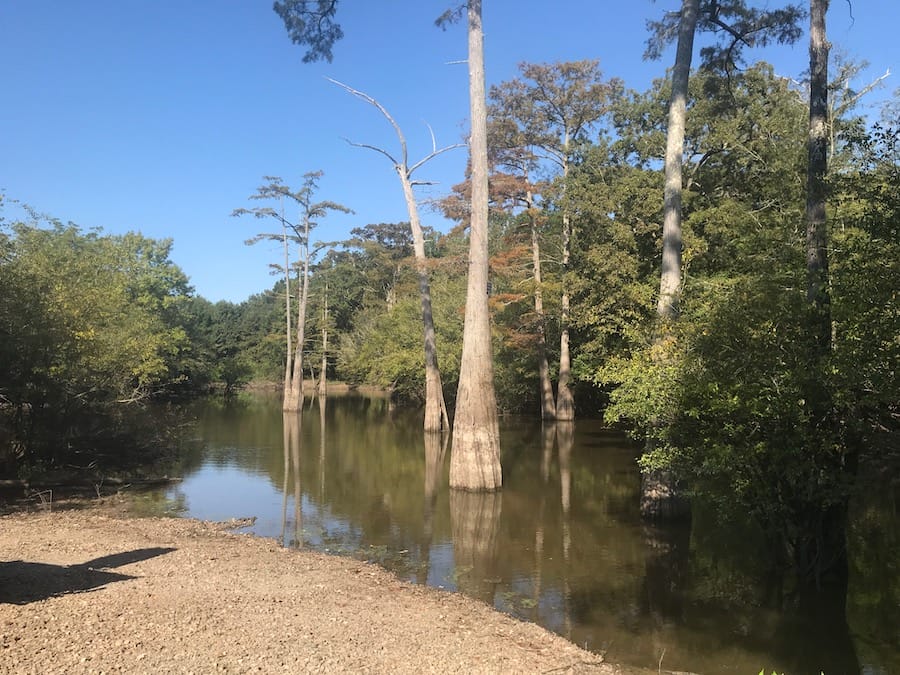
Getting outside and taking time to enjoy nature, observe wildlife and view the beautiful scenery around Arkansas has perhaps never been more popular than it is now. With thousands of miles of hiking and nature trails and over 3 million acres of public lands, there are plenty of places to explore. Yet up until a few years ago, Arkansas was missing something that many other states have: water trails.
Arkansas’s big lakes like Greers Ferry, Beaver, and Degray, as well as rivers like the Buffalo and Spring, have always been hot spots for canoeing, kayaking and other paddle sports. While searching for the ivory-billed woodpecker in 2005, Kirsten Bartlow, watchable wildlife coordinator with the Arkansas Game and Fish Commission, looked for new ways to encourage people to experience the state’s outdoors when she connected with Debbie Doss, founder and director of the Arkansas Watertrails Partnership.
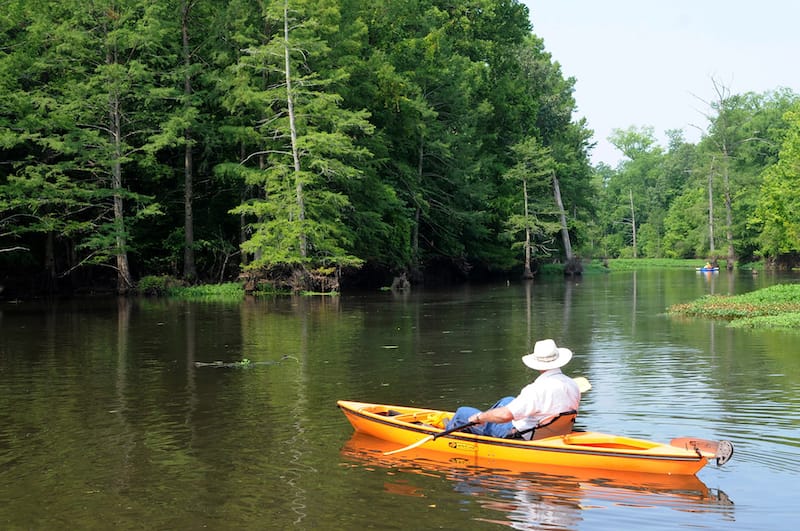
What is a Water Trail?
Much like a hiking trail, a water trail is a designated route along a waterway that is intended for recreational use. Water trails are easily accessible to small non-motorized watercraft and used by kayakers, canoers, and paddleboarders. Often, water trails will also have picnic or camping sites and provide access to scenic areas that are difficult to maneuver on foot. Bartlow and Doss had a shared goal of creating such trails throughout Arkansas that paddlers could easily find, access and follow.
Trails needed to be mapped, access points needed to be determined and signage placed. Bartlow and the Arkansas Game and Fish Commission had the tools to complete the project. Still, they needed to connect with a variety of other state and federal agencies to designate areas as water trails. This need led Doss to form the Arkansas Watertrails Partnership which joined the commission with citizen volunteers and paddling enthusiasts, Cache River, White River Refuge, Felsenthal Nation Wildlife Refuge, The Nature Conservancy in Arkansas, the Natural Heritage Commission, the Buffalo National River and Arkansas State Parks in the common goal of promoting waterways for tourism, wildlife viewing, physical activity and angling.
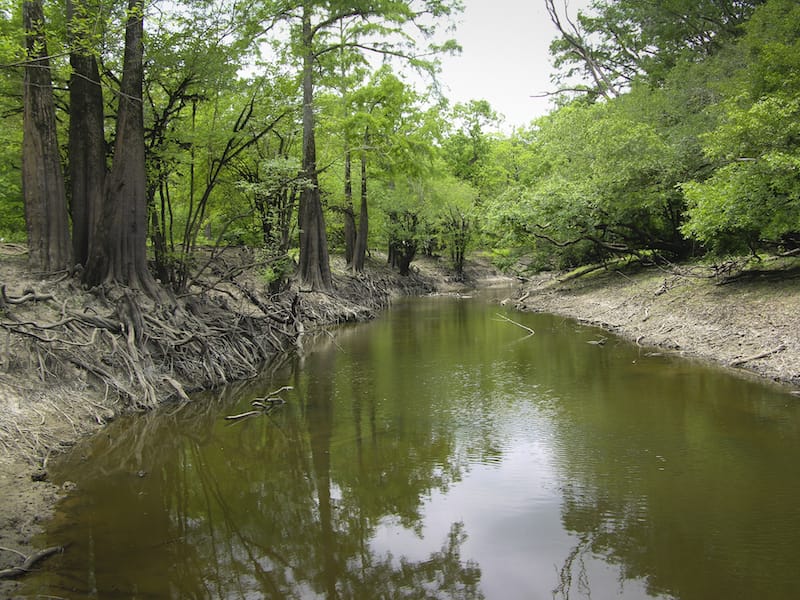
Arkansas’s First Water Trail
Located between Des Arc and Hazen, the Wattensaw Bayou became the first water trail designated by Arkansas Game and Fish in 2009. This flat-water trail is usually slow-moving and provides ample opportunity to view great blue herons, bald eagles, cypress and water tupelo as well as raccoon, deer and other wildlife. In addition to seeing wildlife, crappie and bream fishing is plentiful as well as catfish. Primitive campsites are located at several spots along the trail and are available on a first-come, first-served basis.
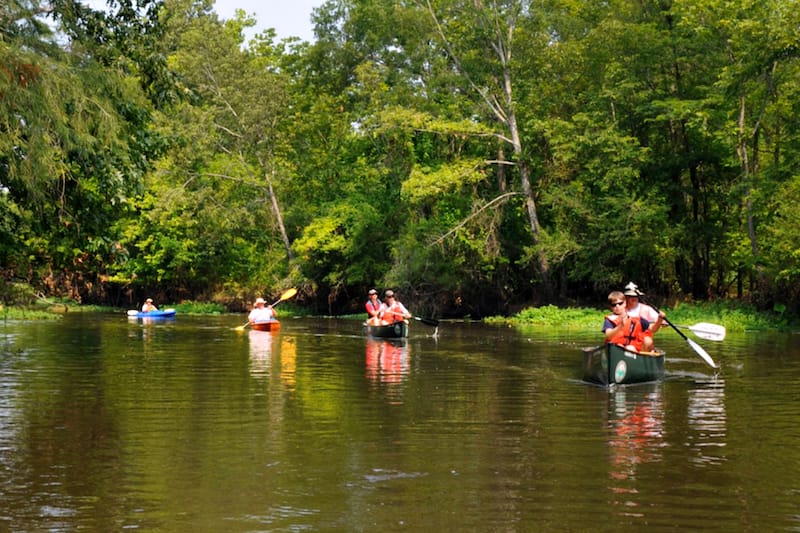
Why Are Water Trails Important?
Water trails provide opportunities for recreation, support conservation of aquatic ecosystems and the land areas that surround them. Perhaps more importantly, water trails can give a boost to the surrounding communities. They are often located in rural areas. Visitors to the area can have a positive economic impact. Small towns benefit when paddlers visit their restaurants, grocery stores, hotels and campgrounds. Water trails may also provide opportunities for new businesses such as boat rental stands, shuttle services and bait and tackle shops.
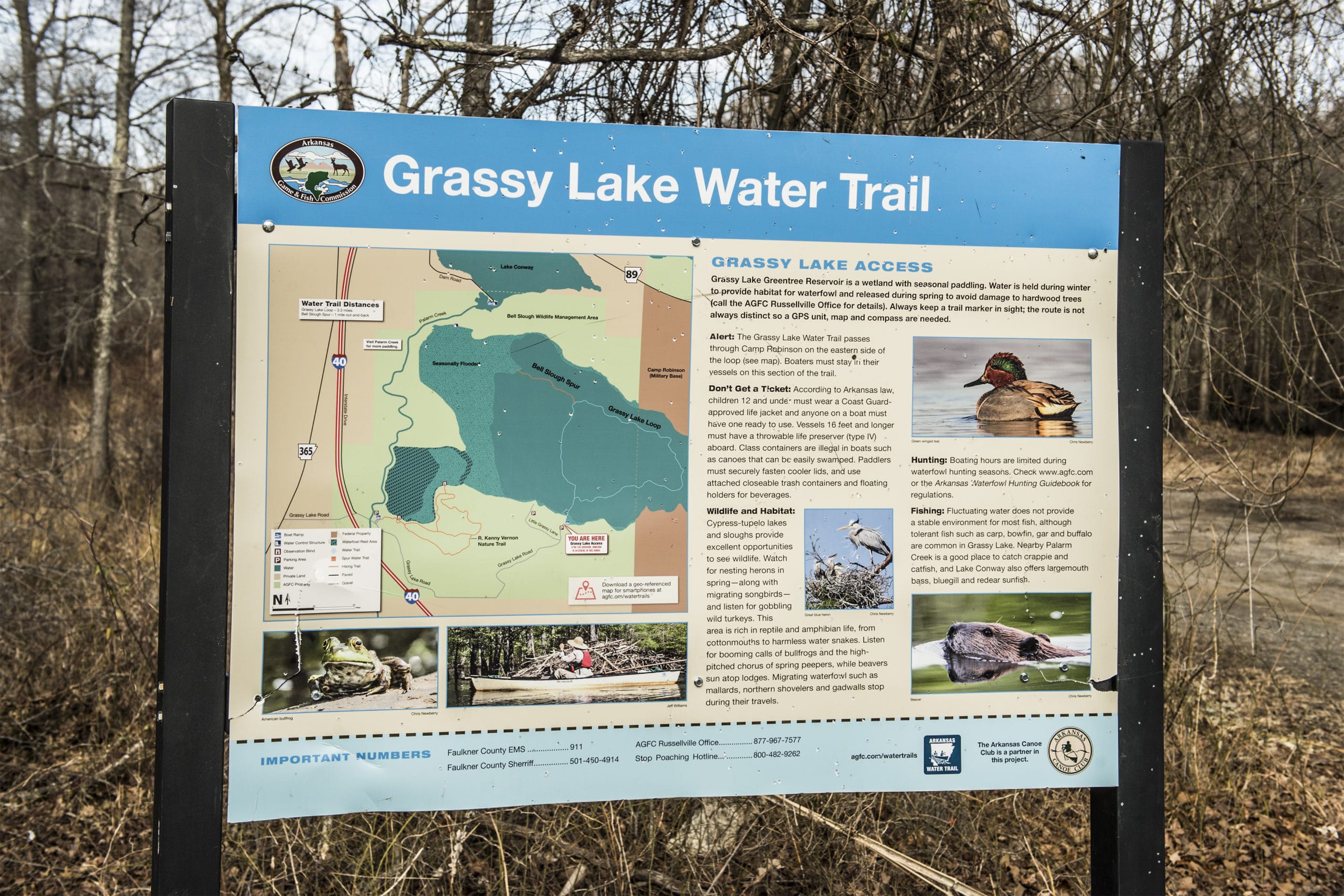
How to Use Arkansas Water Trails
- Check the website to learn the specifics about each trail (see list below) before you go. It’s essential to be aware of trail length, float time and water conditions as well as access points.
- Bartlow points out that it can be easy to wander off the trail. Many of the trails are marked with blue reflective signs and Arkansas Game and Fish provides printable maps as well as geo-referenced maps of each one. It’s important to let someone know where you will be and when you expect to return: especially if you are paddling alone.
- Travel well prepared with food, water and other supplies. Much like hiking, you will be remote once you hit the trail and there is no access to facilities.
- Practice the principles of Leave No Trace.
- Enjoy the wildlife. Binoculars, cameras, wildlife guides and sketchbooks can help you watch and document all of the flora and fauna you encounter.
- Camp along the trail. Many of the water trails have primitive camping sites where you can set up for a night or two while you explore the area. The floating camping platform located along the Little Maumelle Water Trail is a unique lodging opportunity available only by reservation. You can find more information here.

Where to Go in Arkansas
There are currently 13 established water trails in Arkansas. This summer, Bartlow anticipates the opening of the St. Francis Sunken Lands Trail in the northeast part of the state. Information on each trail is regularly updated on the Arkansas Game and Fish website.
- Arkansas Post
- Bayou Bartholomew
- Bayou DeView
- Crooked Creek
- Cut-Off Creek
- Felsenthal National Wildlife Refuge
- Grassy Lake
- H Lake
- Islets Cove Paddle Trail on DeGray Lake
- Lake Ouachita | Rabbit Tail Water Trail
- Little Maumelle River
- Robe Bayou
- Wattensaw Bayou
Get Involved
It’s time to head out to the garage and pull down the kayaks that have been gathering dust for the last few years. Gear up and head out to one of the great water trails provided for public use.
Communities or individuals with suggestions for future water trails are urged to contact Arkansas Game and Fish or the Arkansas Watertrails Partnership as they are always looking to expand the program.
Photos courtesy of Arkansas Department of Parks and Tourism unless otherwise noted.
We do the work.
You check your email.
Sign up for our weekly e-news.
Get stories sent straight to your inbox!






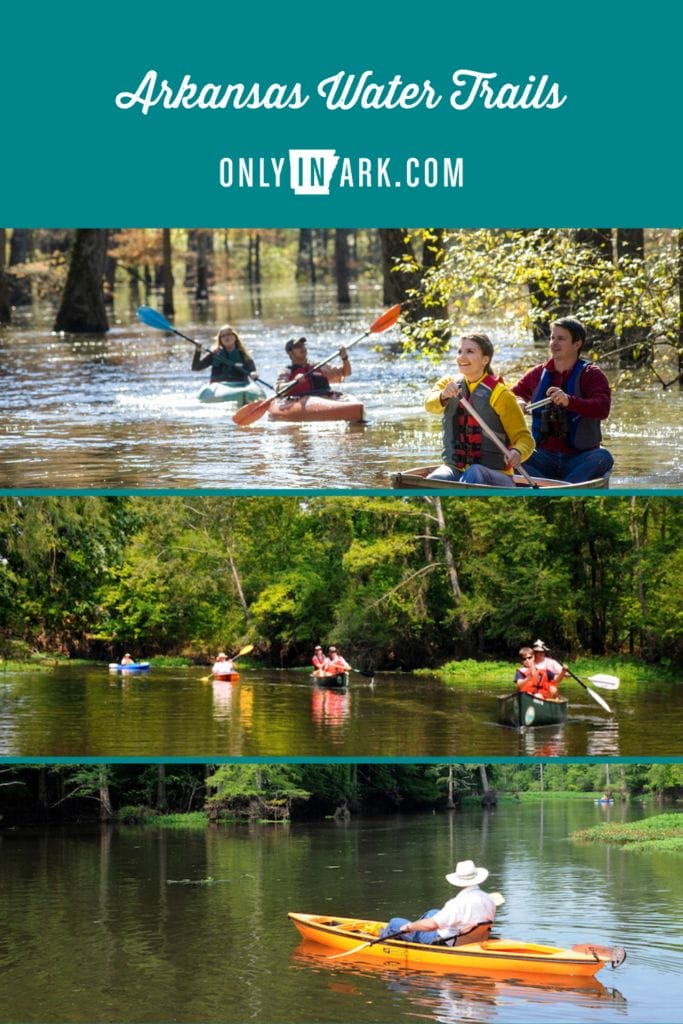






 Leave a Reply
Leave a Reply
[…] Arkansas Water Trails (Statewide) – These trails were designed with kayaks and canoes in mind. Read more about the Arkansas Water Trails. […]
[…] Arkansas Water Trails […]
[…] Lands Water Trail – The newest water trail in Arkansas was dedicated in October of 2020. The best place to access the trail is at the Oak […]